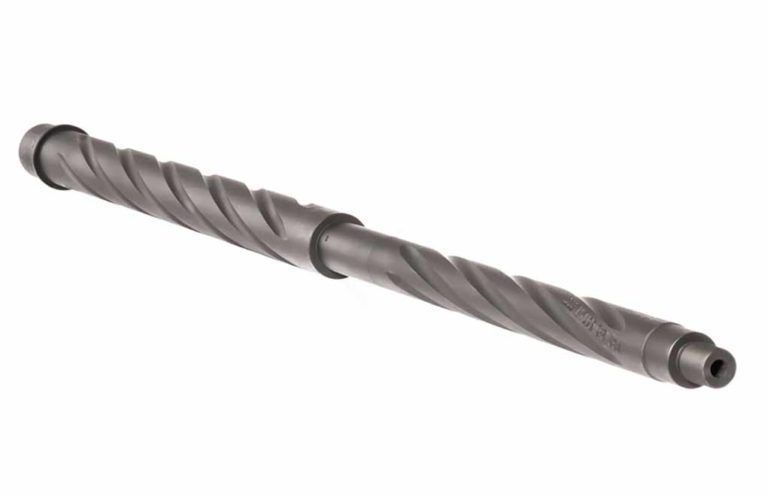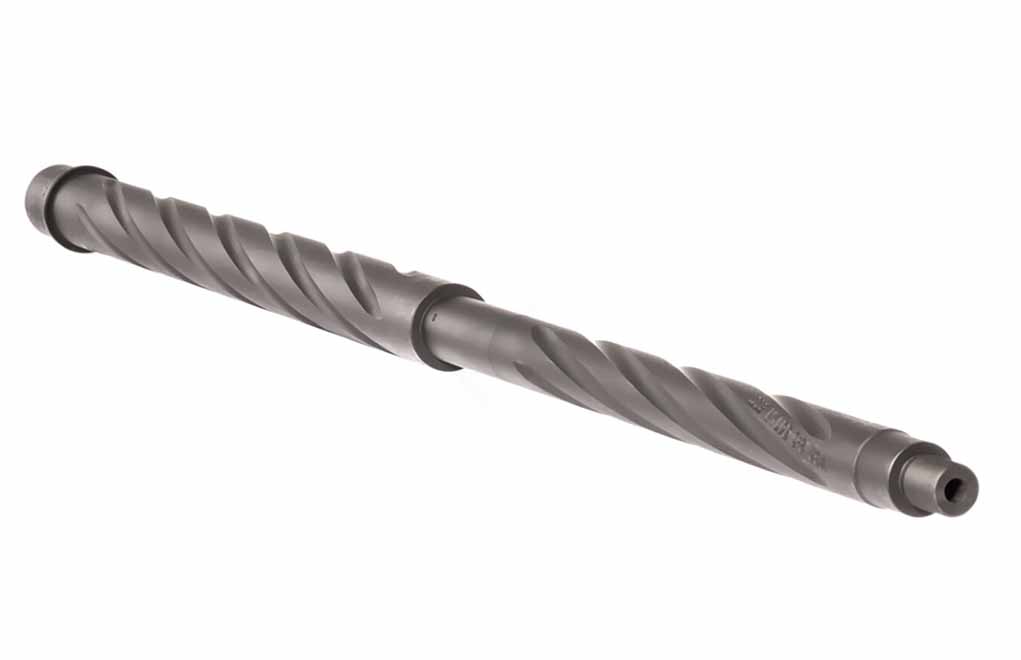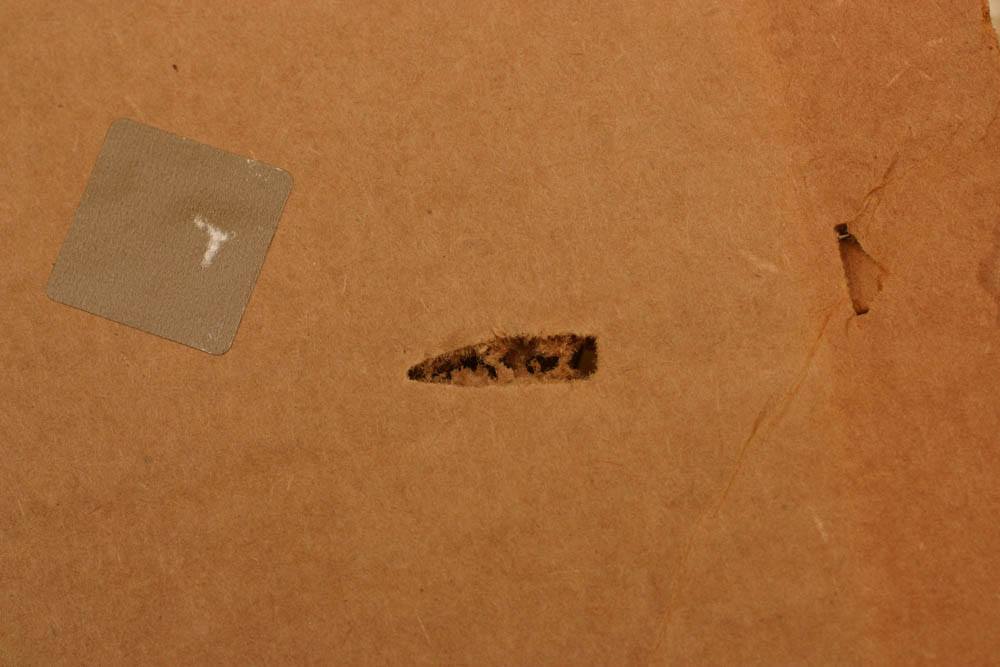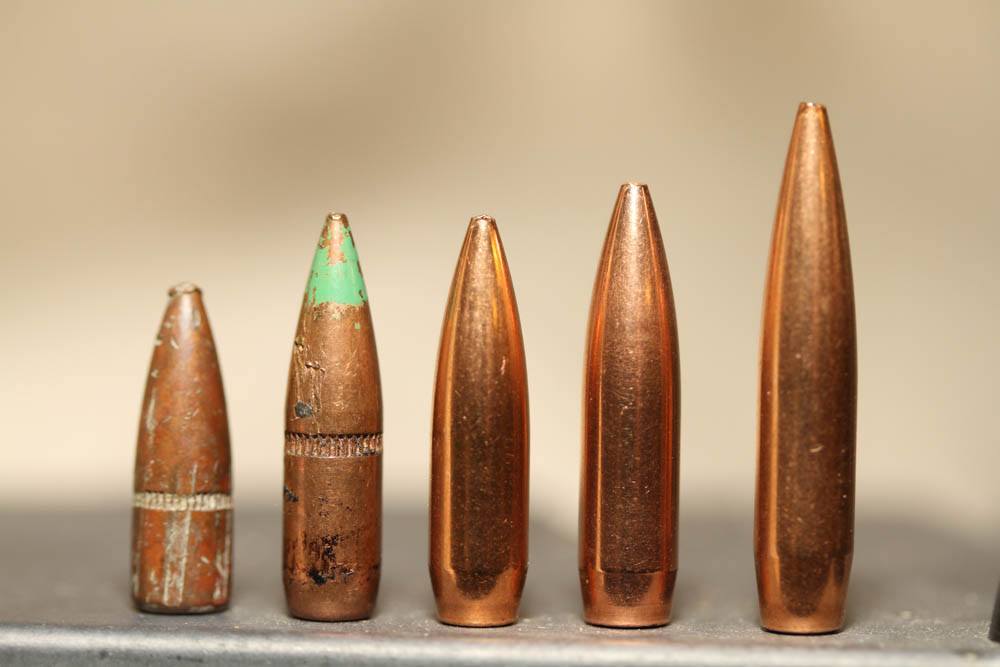

Wading through the huge amount of AR-15 barrels on the market is daunting, but the selection process can be simplified if you boil it down to a few key factors.
Your AR-15 barrel is toast. How long does that take to happen? Good question. The mil-spec guys will tell you that the spec is 7,500 rounds. Well, okay. If you are willing to swap out your chrome-lined Colt barrel at 7,500 logged non-military-use rounds, and install another, I’d be happy to buy that supposed shot-out barrel from you. I'll give you $20 for the thing, with the swap.
My Faux A2 began life with a no-name barrel. After a couple of fun-filled winters shooting in Mad Minute matches, and lots of practice competing in monthly 3-gun, it was starting to show a bit of wear. By then it had chugged through roughly 15,000 rounds and wasn’t holding minute-of-angle (MOA) groups. It was still well under the mil-spec acceptance accuracy level, which equates to about 3 MOA (roughly 3 inches at 100 yards).
The second barrel lasted a bit longer than that, but it too started to lose accuracy. The rifle is now on its third barrel (with the same bolt) and it is doing fine.
To illustrate, at a recent class one of the students was having trouble getting his rifle zeroed. The groups just wouldn’t settle down. He had no idea how many rounds he had put through it in the twenty years or so he’d owned it, so we stuffed an erosion gauge down the throat. Typically, the erosion gauge will show some wear past the “new” point, and once it shows an inch or two of wear you can count on the barrel being used up. The erosion gauge went more than halfway down his barrel — about two-thirds of the way to the muzzle! For a moment, I thought it was going to fall out of the muzzle end. And he’d only recently noticed a drop in accuracy.
Now, had an NRA High Power Master shot it, he or she would have noticed an accuracy problem years ago. But he was concerned about its potential use in his law enforcement job, where a gunfight might be conducted at the length of a Buick.

So, how worn-out is too worn-out? That depends. The military 7,500-round figure takes into account a healthy routine of full-auto or burst-fire use, in harsh and unforgiving climates and with little or no maintenance. If that’s you, then yes, 7,500 rounds is a reasonable figure. At today’s ammo prices that represent a minimum of $2,000 to $2,500 in ammunition, so the price of a new barrel really isn’t a big deal. You should be able to put a good quality replacement in there for a tenth of the ammo cash you burned up practicing and competing.
Another possibility is that you haven’t worn out a barrel; instead, you’re perusing the pages of an AR maker’s catalog trying to decide which barrel to get.
Barrel length
There are three common lengths for AR-15 barrels. Two are specific and one is general. The two specific are rifle and carbine, 20 and 16 inches, respectively. The general one is “SBR” or short-barreled rifle. There’s also a single length found in 3-gun and multi-gun competition, which is 18 inches.
Rifle barrels are 20 inches long for one simple reason: that was what the original was made at, and what the government first bought. It delivers a very good velocity for its length and, unless you are a really short person, it is a handy size except in tight quarters or vehicles.
The carbine is 16 inches for a very simple reason — that is the shortest allowed under federal law. It is a handy length, but it isn’t the handiest in the situations that require the handiest, so the category of SBR fills that need. Anything shorter than 16 inches is what is called a “short-barreled rifle” in regulatory parlance and is controlled by the National Firearms Act of 1934. NFA/34 means you have to ask permission to buy one (if allowed in your state) and pay a one-time tax of $200. SBRs can be as short as 7 inches, but those also can be very persnickety to run reliably, they have shorter service lives and you lose lots of velocity. You gain noise as well.
What length, weight, twist and material barrel you decide to install is between you, your aspirations and your wallet. Just one suggestion, though. It is a whole lot easier to buy too heavy, than it is to buy too light. Heavy barrels are hard to carry, light AR-15 barrels are hard to shoot. At least a light barrel can be carried — and thus shot.
And in case you ever wondered, why a 14.5-inch barrel?Colt had spent a lot of time and money making the various “Commando” models work properly (this was before the M4). They had 11.5-inch barrels on the guns, which sold well for Colt. Then, an overseas customer wanted compact rifles, but had an odd request. Could Colt make them take a bayonet?
Colt no doubt scratched their heads over this, but if the customer was willing to pay, then why not? So, the carbine-length gas system, with a barrel extended just long enough to mount a bayonet, was developed. It came out to 14.5 inches in length, which also happens to provide pretty much the same gas dwell time as the regular rifle.
When Colt settled in to develop what later became the M4, they used the 14.5-inch barrel as the standard, because, well, if you’re going to have a more-or-less general issue rifle or carbine, it had to have the means to mount a bayonet. And in the convoluted logic of the military, it was easier to have a carbine with a non-standard AR-15 barrel length and use any of the warehouses full of normal bayonets than it was to make a rational barrel length and special bayonets for them.
If you want to use a USGI M4 14.5-inch length barrel on a non-SBR build, you have to find some way to extend the barrel past 16 inches. This you do with an extra-long flash hider, which is pinned and welded to permanently secure it on the barrel.
Most of us take a different path. We either just build it as a 16-inch-plus barreled carbine, or we SBR it and go with an 11.5-inch tube. Me, I don’t see the attraction of a 14.5-inch pinned and welded barrel.
Twist rates
When it comes to AR-15 barrel twist rates, how fast is fast enough? The original Armalite AR-15 had a barrel with a twist of 1/14. That is, the rifling took 14 inches to complete one full rotation. While Arctic testing in extreme conditions, the government found that the 1/14 rate was marginal. If the air was as dense as it can be on a high-pressure day at 20 below zero, bullets become unstable.
The old canard about bullets tumbling in flight is wrong. I don’t care what someone tells you, or the basis of their experience, or where they were when it supposedly happened. It is wrong. So consider this your first lesson in avoiding bad advice; some people who should know better are wrong.
The government sped the twist rate up to 1/12, and there it remained until the A2 came along.
The next change happened when it came time to adopt the M16A2. The testing that had been done prior to adoption had utilized a barrel with a 1/7 twist. Not because it was best, but because it was fast enough to stabilize all the bullets the military was going to consider. You see, the longer a bullet is, the faster you have to spin it to generate sufficient gyroscopic stability.
With the adoption of the M16A2 and its 1/7 twist rate, things got complicated. Let’s get a few things out of the way first.

1/7 too fast?
Yes, a 1/7 twist rate is too quick for some bullets. If you shoot ammo with the lighter hollowpoints, such as the varmint bullets, they may spin apart on their way to the target. This will likely not be a problem with 52-grain and heavier hollowpoints and is not an issue at all with 55 FMJ.
The twist, while fast, will not harm accuracy. An accurate bullet will shoot to the level of its accuracy in a 1/7-twist barrel.
1/12 too slow?
Is 1/12 too pokey? Yes, for the military standard M855 bullet and anything longer or heavier. A 1/12 twist will throw a 62-grain M855 bullet sideways through a target at 25 yards. However, I have shot the Winchester 63-grain softpoint very accurately in 1/12-twist rate barrels. How? Simple. The M855 has a steel tip inside the core. This makes it longer than the blunt, round-nose, 63-grain softpoint from Winchester. The Winchester bullet is short enough that it can be stabilized (probably just barely) in a 1/12 barrel. I had a 1/12 pencil-barrel-equipped upper that shot those bullets into one hole at 100 yards. Well, at least until I wore it out.
So that means you use 55 FMJ and similarly weighted bullets in a 1/12 barrel, and anything heavier in a 1/7 barrel. That leaves the compromise, the 1/9. What’s up with that?
1/9 the middle bear
The slam against the 1/9 barrel is that it isn’t mil-spec. But it can be accurate.
Mathematically, a 1/9 barrel, firing the now-standard heavyweight bullet of 75 or 77 grains, has the same stability as a 55-grain FMJ in a 1/12 barrel. Most of the shooters who pony up the money for the premium ammo (the 75- & 77-grain loads do not come cheap) would not go slumming with a 1/9 barrel. Their loss.
Faster twist rates
You’ll see barrels listed as 1/8. Those are usually premium match barrels, meant for a steady diet of nothing but 75-, 77- and even 80-grain bullets. Match shooters want X-ring accuracy out to 600 yards or more and will pay for a hand-lapped barrel. Those who are hurling even heavier bullets — 90 and 100 grains in the .223/5.56 — will opt for a 1/6.5 barrel.
The catch here is case capacity. Heavy bullets like that are so long that if you loaded them so they would fit into the magazine they would crowd out the powder, you need to make velocity. So match shooters load them long — as long as they can and still have the case neck hold the bullet properly. That requires them to load rounds one at a time, directly into the chamber.
This is not a problem, because of the shooting times in matches. You see, while the timed and rapid-fire segments of High Power competition call for 10 shots in 60 seconds, the long-range portion calls for a maximum rate of one shot per minute.
For each shot, the target is pulled down, the location marked and the target raised. The shooter notes the location of the hit, the target is pulled down, the hole pasted and then sent back up again. Repeat for the number of shots the scoring string calls for.
Unless you are heading off to shoot in NRA High Power or off to Camp Perry, your choices are simple: a 1/12 for vanilla-plain 55 FMJ blasting, a 1/9 if you want to use heavier hunting bullets and a 1/7 for the heaviest bullets that will feed from a magazine. Beyond that, consult with the winning shooters in your club for advice on long-range target shooting.
Editor’s Note: This article is an excerpt from Gunsmithing the AR-15: The Bench Manual, by Patrick Sweeney.

Next Step: Get your FREE Printable Target Pack
Enhance your shooting precision with our 62 MOA Targets, perfect for rifles and handguns. Crafted in collaboration with Storm Tactical for accuracy and versatility.
Subscribe to the Gun Digest email newsletter and get your downloadable target pack sent straight to your inbox. Stay updated with the latest firearms info in the industry.

![Best Concealed Carry Guns In 2025 [Field Tested] Wilson Combat EDC X9S 1](https://gundigest.com/wp-content/uploads/Wilson-Combat-EDC-X9S-1-324x160.jpg)


![Best 9mm Carbine: Affordable PCCs [Tested] Ruger Carbine Shooting](https://gundigest.com/wp-content/uploads/Ruger-Carbine-Shooting-100x70.jpg)
![Best AR-15: Top Options Available Today [Field Tested] Harrington and Richardson PSA XM177E2 feature](https://gundigest.com/wp-content/uploads/Harrington-and-Richardson-PSA-XM177E2-feature-100x70.jpg)
